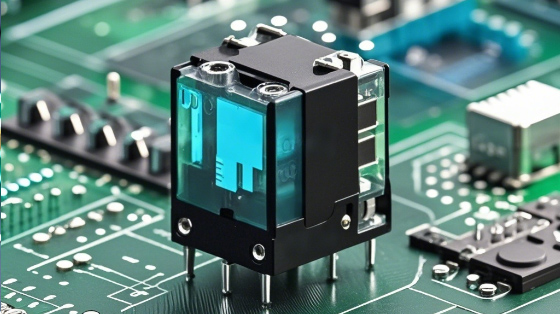Relays: The Unsung Heroes of Modern Electronics
2024/10/25 11:32:17
In the realm of modern electronics, there are numerous components that work silently behind the scenes to ensure the smooth functioning of various devices and systems. One such crucial element is the relay. While often overlooked, relays play a vital role in a wide range of applications, from industrial automation to home appliances and even in sophisticated telecommunications and automotive systems.
A relay is an electrically operated switch that allows a relatively small electrical signal to control a much larger electrical current. It acts as an intermediary between low-power control circuits and high-power load circuits. The basic principle of a relay involves an electromagnetic coil that, when energized by a control signal, generates a magnetic field. This magnetic field then attracts a metal armature, which in turn closes or opens the contacts of the relay, thereby controlling the flow of electricity in the load circuit.
In industrial settings, relays are indispensable for automating processes and ensuring safety. For example, in manufacturing plants, relays are used to control large motors, pumps, and conveyor belts. They can be programmed to start and stop these heavy-duty machines at specific times or in response to certain conditions, such as temperature or pressure sensors. This not only increases efficiency but also reduces the risk of operator error and equipment damage. Moreover, relays are often used in safety systems to cut off power in case of emergencies, protecting workers and equipment from potential hazards.

In the field of telecommunications, relays are used to route signals and switch between different circuits. They enable the seamless transfer of data and voice signals, ensuring reliable communication. In satellite communication systems, relays play a crucial role in amplifying and retransmitting signals over long distances. Without relays, the complex web of global communication networks would not be possible.
Home appliances also rely on relays for their operation. Refrigerators, air conditioners, and washing machines use relays to control the motors and compressors that drive these devices. Relays ensure that these appliances start and stop at the appropriate times, based on user settings and internal sensors. They also provide protection against electrical overloads and short circuits, prolonging the lifespan of the appliances.
The automotive industry is another major user of relays. Relays are used in cars to control functions such as headlights, windshield wipers, power windows, and starter motors. They help manage the electrical power distribution within the vehicle, ensuring that different systems receive the correct amount of current. In addition, relays are designed to withstand the harsh environmental conditions of a vehicle, including temperature extremes, vibration, and moisture.
The development of modern relays has been driven by advancements in technology and the increasing demand for more efficient and reliable electronic components. Today, relays are available in a variety of types and configurations, each designed for specific applications. Some relays are miniature in size, suitable for use in portable electronic devices, while others are large and powerful, capable of handling high voltages and currents in industrial applications.
Solid-state relays, for instance, have emerged as a popular alternative to traditional electromechanical relays. Solid-state relays use semiconductor devices instead of mechanical contacts to control the flow of electricity. They offer several advantages over electromechanical relays, including faster switching times, lower power consumption, and longer lifespan. However, they also have some limitations, such as higher cost and sensitivity to heat.
As the demand for smarter and more connected devices continues to grow, the role of relays is likely to become even more important. In the era of the Internet of Things (IoT), relays can be integrated into intelligent systems to enable remote control and monitoring of electrical devices. For example, a smart home system can use relays to control lights, appliances, and security systems from a smartphone or other mobile device.
In conclusion, relays are the unsung heroes of modern electronics. They play a crucial role in a wide range of applications, from industrial automation to home appliances and telecommunications. Despite their often overlooked status, relays are essential for the proper functioning of many of the devices and systems that we rely on every day. As technology continues to advance, relays will continue to evolve and adapt to meet the changing needs of the electronics industry, ensuring that our increasingly connected world remains powered and functional.
Related Information

- 2025.03.14 Who Are Intel's Main Competitors?

- 2025.03.13 recent chip - related news 2025


